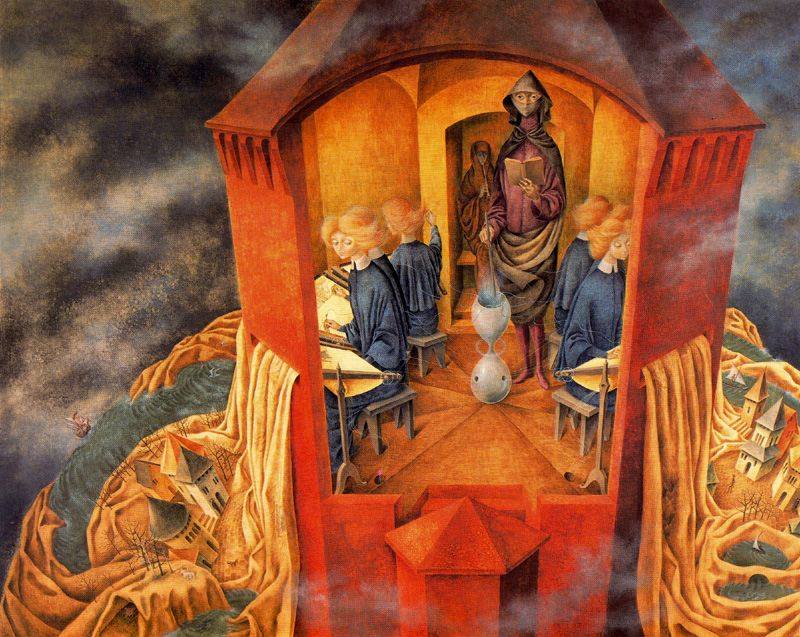1908-1963
Remedios Varo was one of the most significant Surrealist artists in Mexico. Her paintings are made with an exquisite fragility, layered in a painterly style of tiny brush strokes that look as if they are done in egg-tempera. Her people with their heart-shaped faces have an androgynous quality of dreamy vulnerability.
Born in Spain, Varo studied at the San Fernando Academy in Madrid, and in 1930 she married a fellow student. The two of them lived in Paris for a year and then went to Barcelona where they designed advertising posters. It was in Barcelona during the mid-1930s that she joined a circle of avant-garde intellectuals and Surrealist artists. In 1935, she separated from but never divorced her husband. The following year she fell in love with the French Surrealist poet Benjamin Peret, who had traveled to Barcelona to support the Republican cause in the Spanish Civil War.
In 1937, Varo and Peret returned to Paris where she met the French poet Andre Breton, the frontman for the Surrealists and whose 1924 “Surrealist Manifesto” favored imagination over sanity. Varo’s paintings were included in Surrealist exhibitions in London, Tokyo, Paris, Mexico City, and New York during the late 1930s and 1940s.
Because of the outbreak of World War II, Varo and Peret were forced into exile during the German occupation of France. They immigrated to Mexico City at the end of 1941 and supposedly married. In 1947, Peret returned to Paris, and Varo went to Venezuela where she lived for two years. Upon her return to Mexico she had a relationship with Walter Gruen with whom she lived for fifteen years until her death of a heart attack at the height of her career.
In Mexico, Varo shared a studio with her close friend Leonora Carrington. Their strong relationship was based on intellectual, aesthetic, and spiritual affinities. By the end of the 1940s Varo began to develop her mature style, which synthesized the Surrealist techniques of fumage (painting with smoke), frottage (rubbing chalk or charcoal over paper), and decalcomania (transferring designs from one medium to another) with highly detailed, old master figures. Varo constructed her paintings from meticulous preliminary sketches made with precise lines and perspectives. They are inhabited by mysterious figures, who are almost always alone or immersed in a quest. Varo’s female figures and mythical beings engage in occult practices. They are often seen with cats, which have a symbolic meaning for her and provide – along with corridors and doors – an added surrealistic element in her work.
She received great acclaim during her first solo exhibition at the Galeria Diana in Mexico City in 1956. Her second showing was at the Salon de la Arte de Mujer in 1959. She had two showings in 1960, one of which was at the gallery of her dealer.
In 1971, there was a retrospective of her work at MoMA in Mexico City which drew the largest audience in its history. In 2000, her work was shown at the National Museum of Women in the Arts in Washington D.C. She was one of the artists featured in the 2012 LACMA exhibition, “In Wonderland: The Surrealist Adventures of Women Artists in Mexico and the United States.”
More here.
